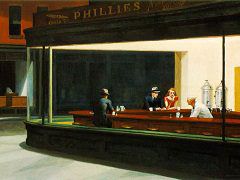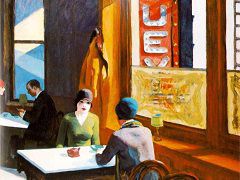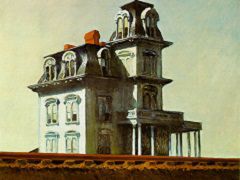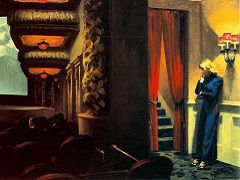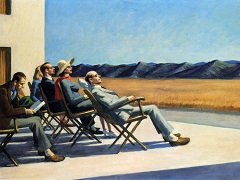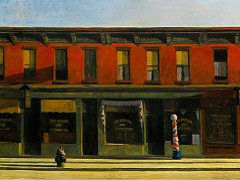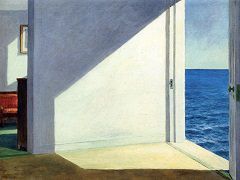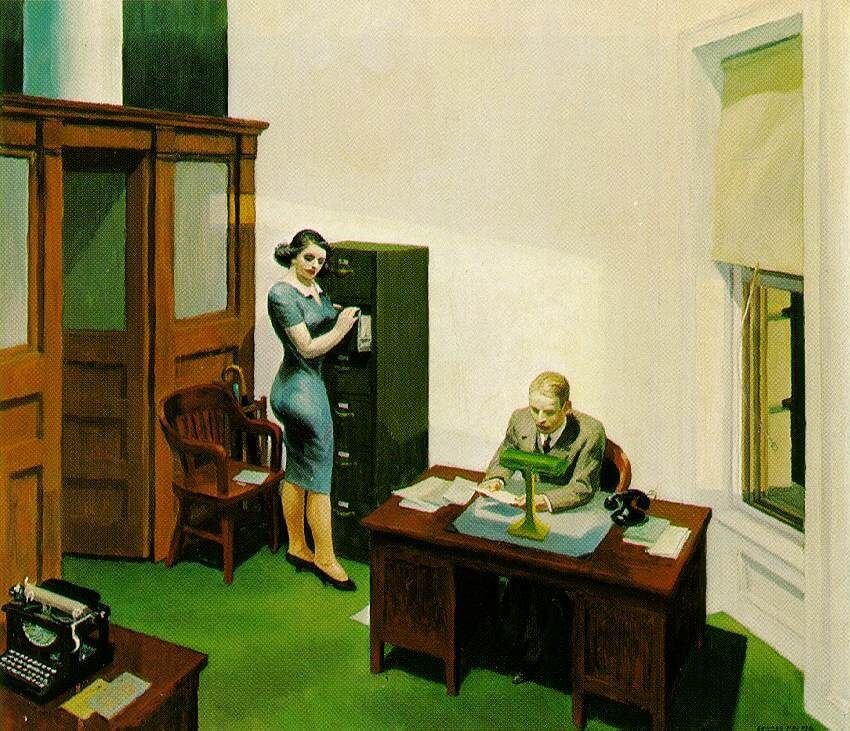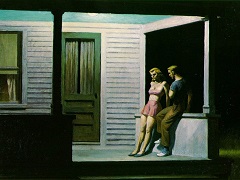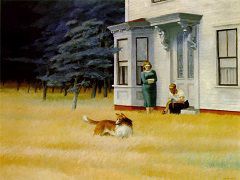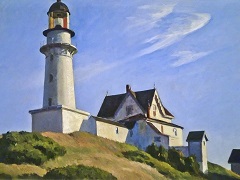Room in New York, 1932 by Edward Hopper
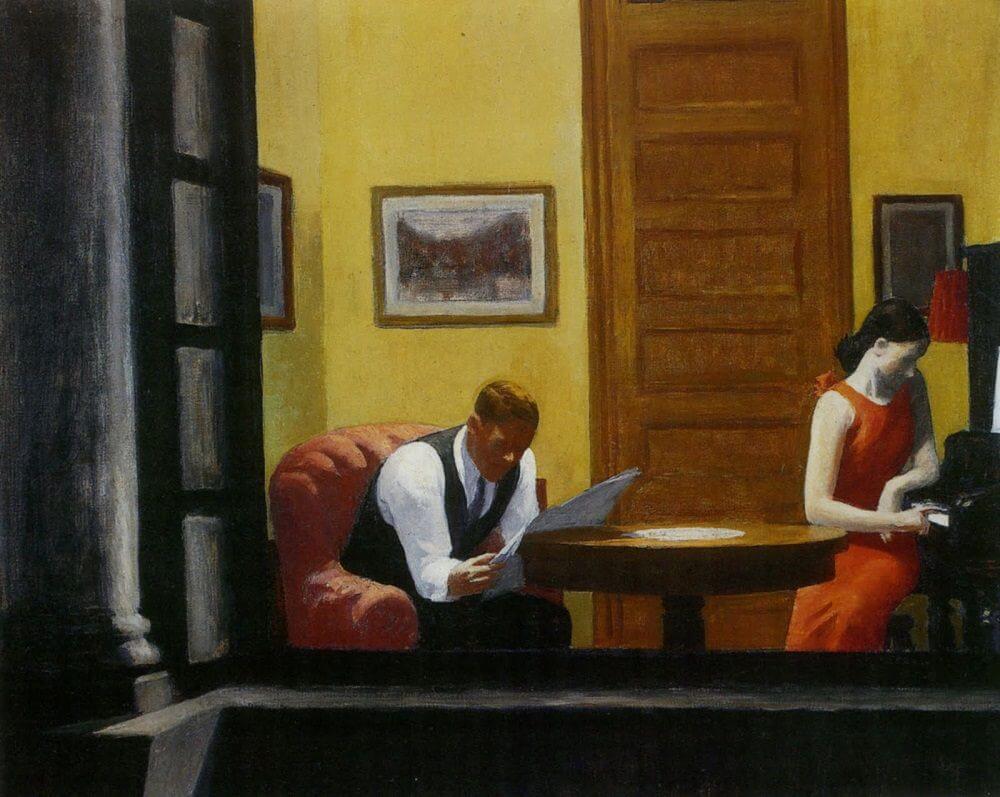
Throughout his life Hopper stated that his art was not an exact transcription of nature; it was a condensation of many scenes and impressions. "I'm always at a loss when asked for facts about any of my pictures or to describe how any one of them came to be made," he told Lloyd Goodrich. "It is so often a very complicated mental process that would not interest people." Hopper's art depended on memory as well as inspiration. He searched for a typical scene, not a unique one, and found he frequently had to cull from a number of experiences and reduce them to a common denominator to make his art. The real world was often too unique, and a specific locale frequently did not render the commonality of the true "American scene," a term he later learned to hate because it became associated in many people's minds with a nostalgic and Romantic view of the world. His description to Lloyd Goodrich of the origins of Room in New York (1932) underscores his method of creation:
The idea for Room in New York had been in my mind a long time before I painted it. It was suggested by glimpses of lighted interiors seen as I walked along the city streets at night, probably near the district where I live (Washington Square), although it's no particular street or house, but it is rather a synthesis of many impressions.“
The viewer implied in this painting is a city dweller who, like a voyeur, knows intimate aspects of strangers' lives. Hopper has chosen to blur the facial features of couple here and shows them as types, thus indicating that our view of their world does not allow us to understand them as individuals.

